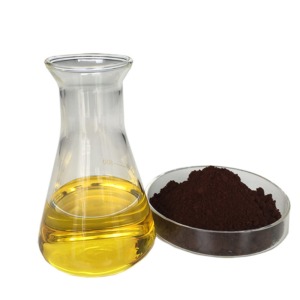The latest guidelines for the hypertension(high pressure) management recommend initiating antihypertensive drug therapy in most patients with a combination of two different drugs from the classes of thiazide diuretics, calcium channel blockers, angiotensin converting enzyme (ACE) inhibitors, or angiotensin receptor blocker (ARBs).
 Ganoderma lucidum triterpenes and proteins have been demonstrated to possess potent ACE-inhibitory properties in vitro. It showed that the protein fractions from the mycelia of Ganoderma lucidum contain highly potent anti-ACE proteins with IC50 values below 200μg/mL. Furthermore, three small peptides with ACE-inhibitory activity, including Gln-Leu-Val-Pro (QLVP), Gln-Asp-Val-Leu (QDVL), and Gln-Leu-Asp-Leu (QLDL), were recently isolated from Ganoderma lucidum mycelia. Notably, QLVP worked in a mixed-type manner against ACE and has an IC50 value of 127.9µmol/L.
Ganoderma lucidum triterpenes and proteins have been demonstrated to possess potent ACE-inhibitory properties in vitro. It showed that the protein fractions from the mycelia of Ganoderma lucidum contain highly potent anti-ACE proteins with IC50 values below 200μg/mL. Furthermore, three small peptides with ACE-inhibitory activity, including Gln-Leu-Val-Pro (QLVP), Gln-Asp-Val-Leu (QDVL), and Gln-Leu-Asp-Leu (QLDL), were recently isolated from Ganoderma lucidum mycelia. Notably, QLVP worked in a mixed-type manner against ACE and has an IC50 value of 127.9µmol/L.
A transverse aortic constriction (TAC) mouse model of pressure overload-induced cardiomyopathy and heart failure revealed that administration of oral Ganoderma spore oil(also called reishi spore oil) every other day for 14 days normalized ejection fraction, corrected the fractional shortening and reduced left ventricular hypertrophy. The cardioprotective effect is related with reduced expression of circular RNA circ-Foxo3, which plays a role in the pathogenesis of heart failure.
An early uncontrolled trial demonstrated that supplementation with Ganoderma lucidum extract (240mg daily) for 6 months reduced blood pressure in hypertensive patients but not borderline hypertensive or normotensive patients. In a double-blind, randomised, placebo-controlled study in 160 patients with confirmed coronary heart disease (CHD), treatment with Ganoderma lucidum polysaccharides for 12weeks improved the symptoms of CHD and reduced average blood pressure from 142.5/96.4mmHg to 135.1/92.8mmHg, whereas there was no significant blood pressure reduction in the control group. Serum TC also decreased significantly with Ganoderma lucidum polysaccharides therapy, but not in the control group.

Leave A Comment